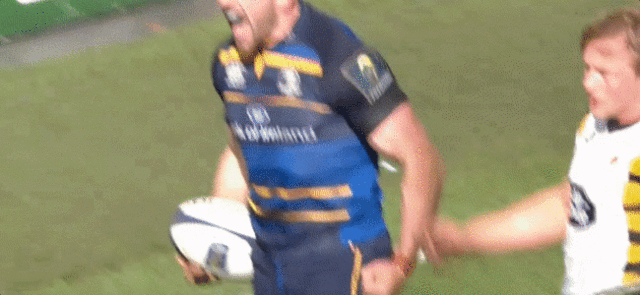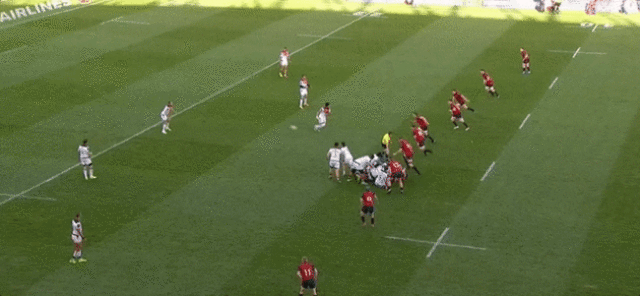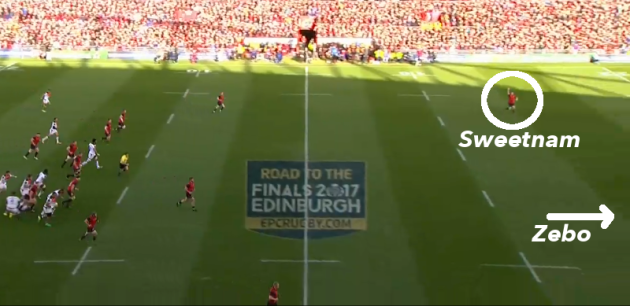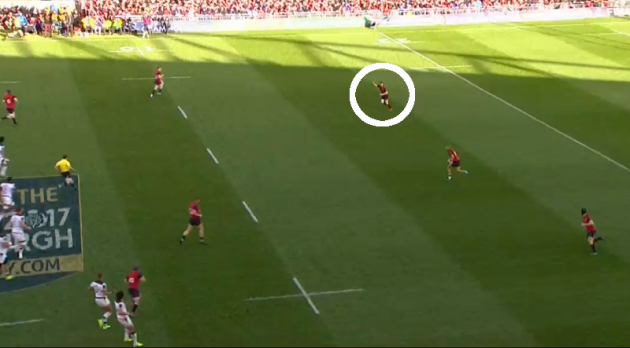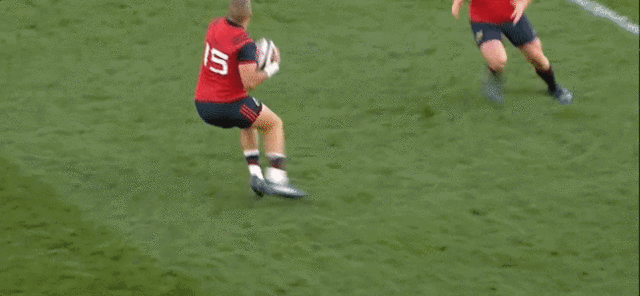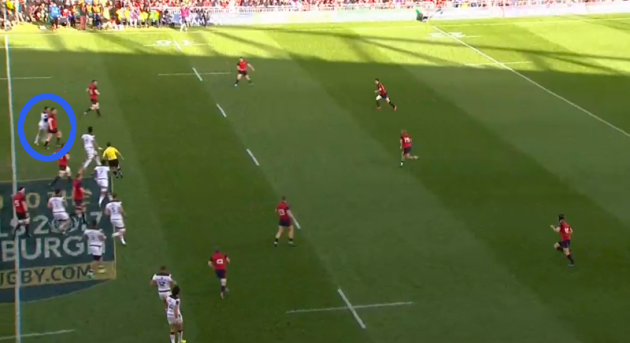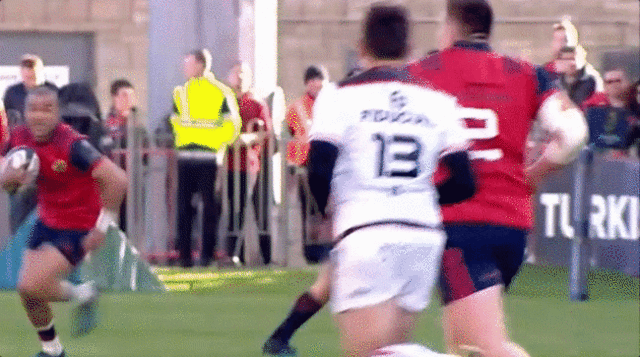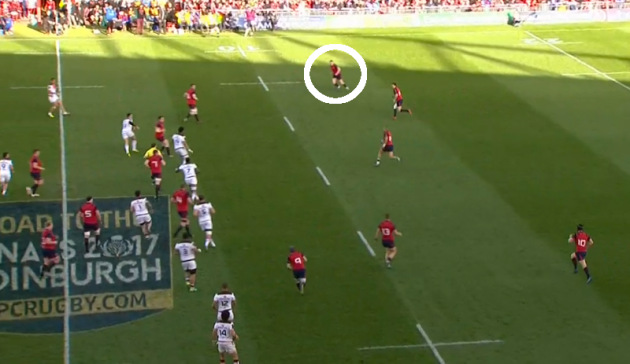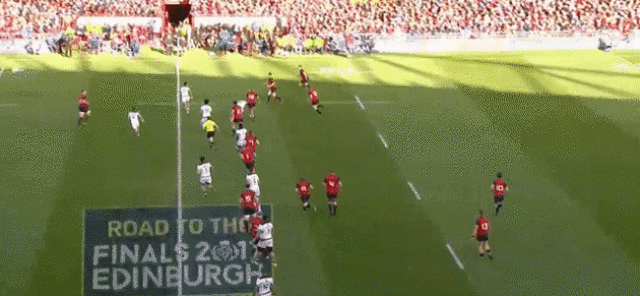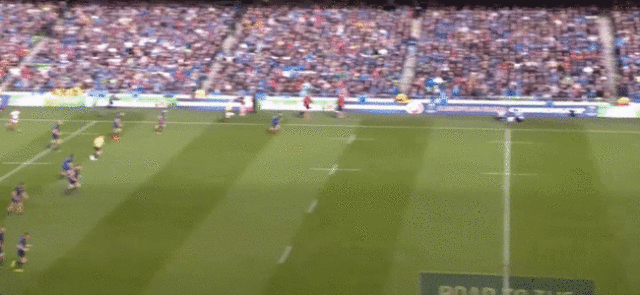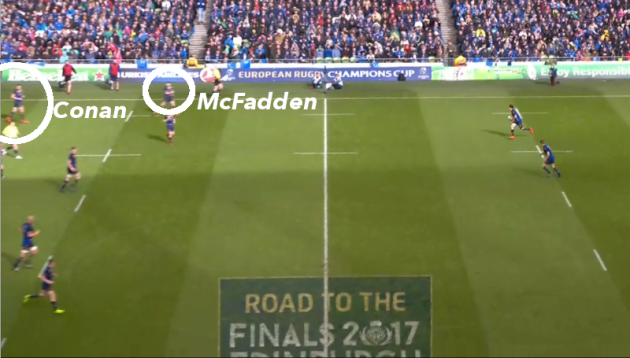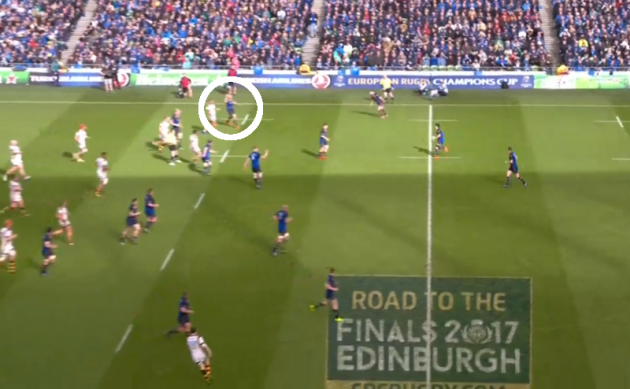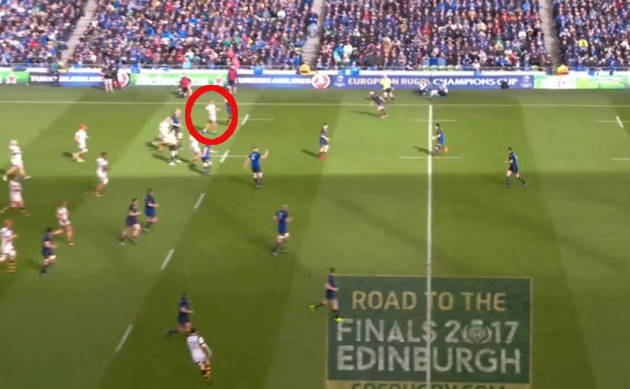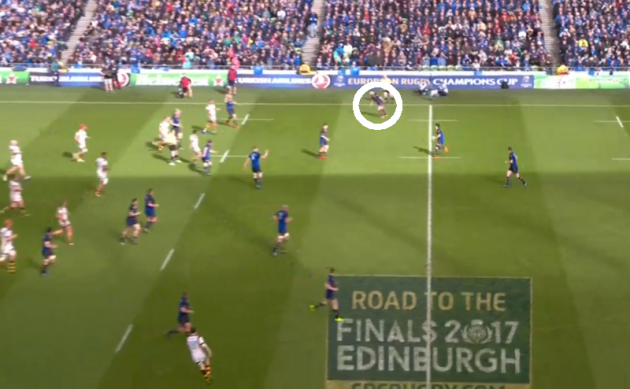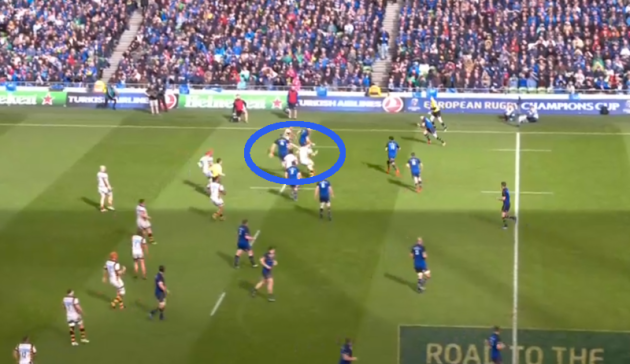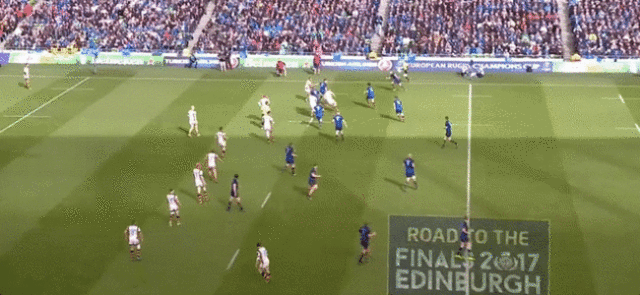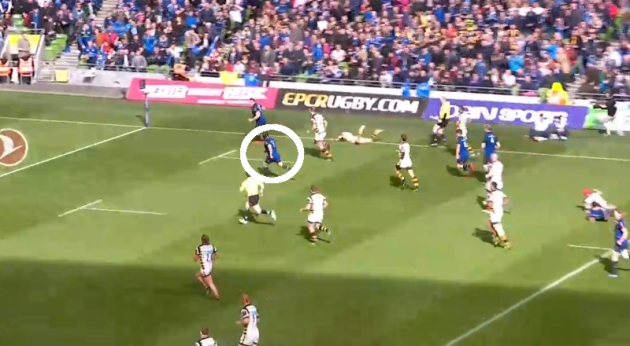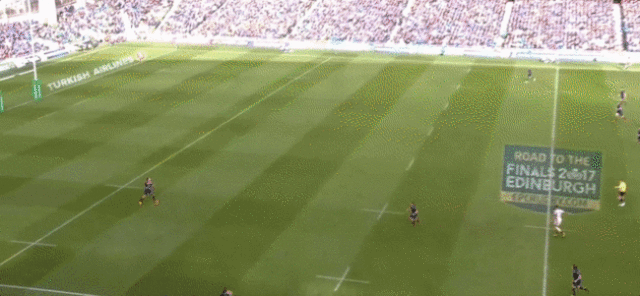IRISH SIDES AREN’T renowned as the most clinical on kick return and counter-attack, but last weekend’s Champions Cup quarter-final wins for Munster and Leinster over Toulouse and Wasps provided us with some encouraging signs.
Unstructured passages in rugby are an ideal time to score tries and generally provide an opportunity for creative attacking players to thrive.
But kick return is not just about the brilliance of individuals. In the modern game, the players who break the line or pressure the opposition when returning kicks are heavily reliant on their team-mates.
There were a number of examples of good kick return attack from Munster and Leinster last weekend, although we also saw evidence that this side of the game remains a work in progress.
Nonetheless, the positive intent is something that should be applauded as we look to broaden the attacking palate of Irish teams at all levels.
Munster manufacture three
First, let’s look at an example from Thomond Park on Saturday.
With Toulouse down to 14 men thanks to François Cros’ early yellow card, Munster force Toulouse into a poor exit when Jaco Taute applies pressure under an excellent Duncan Williams box kick.
Given their numerical advantage, it makes sense for Munster to run this kick back at Toulouse and Simon Zebo is the perfect recipient, given his creativity and vision.
It was always likely that the Munster fullback would look for space and attack it in this instance, but we’re as interested in the actions of his team-mates to facilitate the kick return here.
Even as the ball is high in the air after Jean-Marc Doussain’s kick, we can see Darren Sweetnam [circled below] wide on Munster’s right indicating space for Zebo [out of shot] to direct his attack to.
Sweetnam has simply got his head up and had a good scan of how Toulouse are set up to chase Doussain’s kick.
As we can see below, left wing Paul Perez and outside centre Florian Fritz [circled in red] are the two Toulouse players furthest to the left of kicker Doussain.
They will look to link up with team-mates infield, but there’s a lot of space for them to cover as they advance.
Sweetnam notes the opportunity for Munster and as Zebo fields the ball and turns to run back at Toulouse, the right wing is still signalling and, presumably, verbally communicating with his fullback.
It’s likely that Zebo would have picked out this area of the pitch to return the kick to regardless, but Sweetnam’s basic communication aids the process and the Munster fullback accelerates to his right.
Ahead of the ball, Zebo’s team-mates are also looking to do whatever they can to preserve the space and create more of it.
Below, we can see that hooker Niall Scannell is doing his best to subtly track across in front of Fritz as the Toulouse centre looks to advance up the pitch to meet Zebo.
When we move the camera angle to behind the Toulouse defence, we get an illustration of the fact that Scannell has also signalled to Zebo that the space is wide to the fullback’s right.
Watch below as the Munster hooker glances to his left, points to his left for Zebo, glances again to pick up Fritz’s position and then re-adjusts his running line ever so slightly, looking to impede Fritz as much as he can without being penalised.
We can also see CJ Stander further upfield for Munster, pointing the way for Zebo and underlining that kick return is a team activity – not just for the players in possession of the ball or available for a pass.
Below, we’ve circled Rory Scannell, who has worked back down the pitch to provide an option for Munster close to the touchline on the right.
Suddenly, the opportunity is even more inviting and the crowd pick up on it, the volume rising in Thomond Park.
Fritz does manage to get beyond Scannell, shoving the hooker out of his way, and he dives to tackle Zebo.
But the Munster fullback manages to get his pass away just before being hit and Sweetnam comes forward at pace.
Doussain has swept across to the left side of the Toulouse backfield after his kick to cover a possible return punt by Munster.
As Doussain advances towards play and Perez drifts out towards Sweetnam, the Munster wing makes a rapid decision to chip into the space Doussain is leaving behind him.
The bounce of the ball is far from perfect for Munster, with Perez gathering it in, but Sweetnam is able to get in a low tackle in to slow the Toulouse wing, with Williams and Niall Scannell following in to ground him.
Toulouse are once again forced to kick to relieve the pressure, this time finding touch.
Munster subsequently fire up their maul and win a penalty that brings three points and a 10-0 lead, stemming back to their sharp collective efforts on kick return.
Leinster light it up
Leinster provided us with an even more effective example of kick return on Saturday, creating a try for number eight Jack Conan in the first half of their win against Wasps.
Willie le Roux marks a kick from Luke McGrath but then opts to keep the ball in play with his own clearing kick, or possibly miscues his strike.
Either way, the ball floats invitingly into the hands of Joey Carbery, who never needs an invitation to come back on kick return.
Carbery strides upfield at a controlled pace initially, before bursting to his right to target the space that will lead to Conan’s try.
Again, we must stress the kick returning individual’s role in identifying the space to attack, but we are also interested in the actions of his team-mates.
Above, we’ve circled Conan and Fergus McFadden, both of whom have their heads turned to scan Wasps’ chasing line even as they retreat down the pitch themselves.
Again, there’s nothing groundbreaking here, but we’re seeing clear evidence of players eager to help their team-mate to find the greatest opportunity for a positive kick return.
A second later, we can see that Conan has his right hand up, providing a cue for Carbery, inviting him to attack into this area of the pitch.
Essentially, Conan has identified that Kurtley Beale [in red below] on his inside is the edge defender for Wasps and that if Leinster can tie him down, there’s an opportunity along the right touchline.
As with Munster, Leinster have been using this simple tactic on kick return all season, with retreating players raising their hands to signal potential opportunities for the player coming forward on kick return.
We can actually see that Dan Leavy is doing something similar here, but Carbery has identified the same opportunity as Conan and he accelerates to his right in the split second after the number eight provides the simple cue.
In the image below, we can see that McFadden has turned himself back upfield ahead of Carbery, having also spotted the opportunity down the right touchline.
The Ireland international wing allows Carbery to ‘catch up’ with him before accelerating again in a simple but important bit of work off the ball.
It means he’s in the perfect position to accept Carbery’s pass when the Leinster fullback ensures that Beale does bite in on him.
Just before that happens, we can see that Conan attempts to get a subtle block in on Beale.
The Wasps fullback pushes him away and shifts to the left, hoping to drift out and cover McFadden.
As Beale is moving away from Conan, we can see Devin Toner attempting to impede Joe Launchbury a couple of metres infield [blue below].
Toner doesn’t quite grab Launchbury, but he stretches out his right arm and ensures that the Wasps lock has to arc around him to get out towards his left, where Beale needs Launchbury’s defensive support.
Launchbury gets beyond Toner, but Conan – having already attempted to distract Beale – is still looking to be a nuisance.
The number eight holds his ground, entirely aware of the presence of Launchbury attempting to get across the pitch to defend.
It’s just subtle enough from Conan to ensure that Leinster aren’t penalised, but he knows exactly what he’s doing here.
Launchbury can’t out onto Carbery as a result and that means Beale has to bite in on the fullback, leaving space for Carbery to pass to McFadden on his right, in turn freeing the wing to burst down the touchline.
Wasps’ defence in behind is poor and they will feel they should have rescued this situation, but Leinster’s finishing is clinical and skillful.
McFadden uses his fine footwork to step to the inside of Danny Cipriani and offload back to Carbery, who has continued upfield and then checks his run to accept McFadden’s offload.
The Leinster fullback then draws in le Roux and calmly lays off a pass to Conan on his right for the thundering number eight to finish.
Conan shows fine work rate to be in position to accept the scoring pass.
As we can see above, Conan is actually behind Launchbury as McFadden breaks down the right.
But the Leinster back row is the more alert player as he moves beyond Launchbury and then bursts into a sprint when he gets to Carbery’s right shoulder, leaving the England international in his wake.
Conan then has the pace to get beyond the despairing tackle of Dan Robson, dropping a left-handed fend towards the Wasps scrum-half just to make sure.
In the event that Conan had been scragged by Robson, we can see that hooker Richardt Strauss has worked harder than the retreating Wasps players and he is on Conan’s shoulder.
Conan doesn’t need the support on this occasion, but Strauss’ presence is fitting given our theme of supporting players making life easier for their kick returning team-mates.
Even if the pass doesn’t come, even when the linebreak isn’t conjured or when space is not created in behind the defence, these habits are an important part of kick return.
Seeing the provinces get good returns from their kick return is encouraging for Irish rugby.
As mentioned earlier, kick return didn’t always work out for the provinces last weekend and below we see Carbery tackled behind his entire team by Joe Simpson.
Wasps’ replacement scrum-half rebounds back onto his feet and leads a turnover that the English side score directly off through Christian Wade.
It’s a harsh lesson for Carbery that returning a kick with ball in hand is not always the answer, or at least that his decision-making needs to be close to perfect in these instances.
Luke McGrath works back to Carbery’s right in the instance above, and is his closest support player, but Carbery backs himself to get around Simpson off to his left and just comes up short.
The error is unlikely to stymy Carbery’s kick-returning and counter-attacking instincts, however, and Leinster will look to use the lesson to sharpen and refine them.
Even if there remains scope for improvement, seeing Munster and Leinster bring positive ambition on kick return is very exciting for Irish rugby.
Analysis: Nacewa’s brilliant team try underlines the quality of Leinster’s attack
Racing brand doping probe a ‘pseudo affair’ as Dan Carter is cleared
